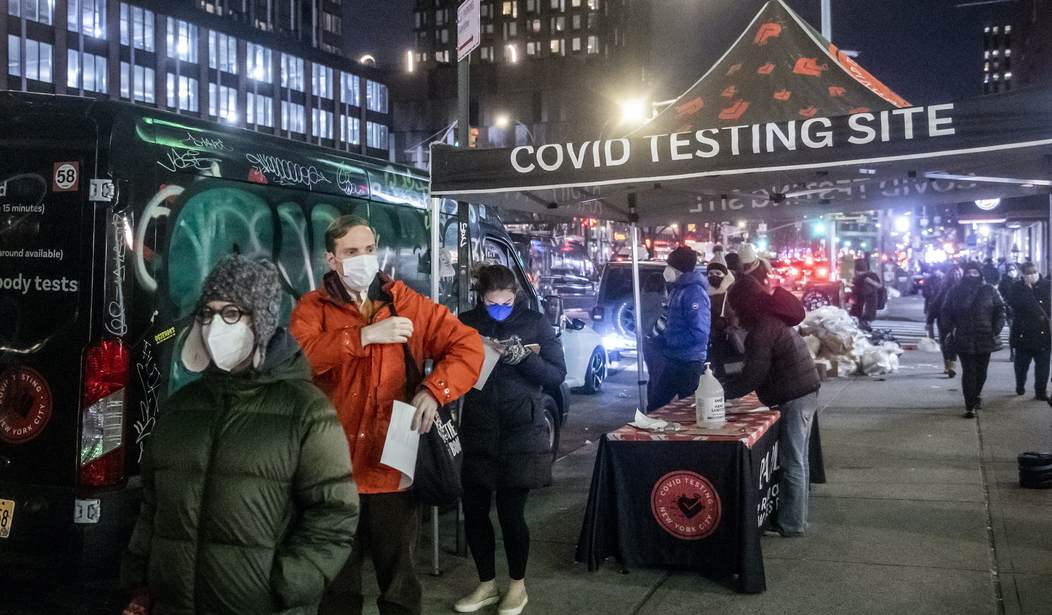Half of me wants to geek out over the concept of better pandemic outcomes through wearable tech and the other half thinks it’s weird that we didn’t already solve this problem within six months of the virus appearing.
It sounds like all the Pentagon is doing here is cataloging the subtle physiological changes a person experiences between the time they’re infected and the start of symptoms and turning that into a “COVID probability” rating. I.e. if you’re wearing a fitness tracker and that tracker detects small consistent trends in different vital signs — slightly faster resting heartbeat, slightly higher body temperature, etc — then you might just have caught yourself a virus. And knowing that ASAP could mean a lot to the other people in your household. If you’re a presumptive positive, you would isolate immediately and contact your doctor about having a prescription for a therapeutic standing by just in case you really do have COVID and symptoms soon begin to show.
But … how does this technology not already exist? Scientists must have had a sense early on of what the first pre-symptomatic changes in an infected person look like. There’s an enormous market of risk-averse COVID hawks who’d leap at the chance to buy a wearable that detects COVID early, giving you a better chance at beating the virus. Fitbit or Garmin or whoever could have met that demand at any point.
In fact, the Pentagon study uses two wearables that are already commercially available, the Oura ring and the Garmin Fenix watch. Fitness tech companies obviously have the tech to do this. Why haven’t they?
The Defense Innovation Unit just gave Philips Healthcare a contract to pursue the potential of “predictive bio-wearables.” The program is now in trials and will track 200 users for one year, which I guess means we’re not going to see this on the market until 2023 at the earliest. The key to it is the algorithm developed by the Pentagon to assemble a picture of likely infection from a mosaic of small biological signals:
The team developed an algorithm that uses data gathered by the watch and ring and predicts whether a user has Covid-19 two days before they are showing symptoms. The technology is akin to a “check engine light” in a car that alerts the user that something might be off, but does not pinpoint what is wrong, said Jeff Schneider, DIU rapid analysis threat exposure program manager.
The [Garmin] watch tracks respiration rate, oxygen saturation and heart rate, while the [Oura] ring collects heart rate and skin temperature, he said.
“We take those features, and we derive something like 160 features from those, and that is where the secret sauce is with this,” Schneider said. The algorithm inputs the data and calculates a score for the user…
Scores range from 1 through 100 — the higher the number, the higher the likelihood of infection.
Preliminary studies found that the algorithm developed by DIU was 82 percent accurate in predicting COVID. They proceeded to a research phase in which more than 9,000 service members were given the ring and the watch to wear and also got solid results: “The algorithm detected 73 percent of those cases and identified individuals 2.3 days before diagnostic testing, Schneider said.” That’s useful in close quarters like military units, where an outbreak can spread quickly and take everyone down. The sooner you have a heads up that one person in the group might have COVID, the sooner they can be isolated from the rest as a precaution.
In fact, once we reach a place where there’s enough supply of Pfizer’s miracle pill to make it available on demand, we could let people who show signs of infection via their fitness trackers begin a course of the treatment immediately, before officially testing positive. Maybe treating someone that early will hold the disease to the “mild cold” stage instead of having it progress to the typical “laid up in bed” resolution.
Of course, if and when we do develop an “early detection” system with fitness trackers, we’ll be plunged back into equity debates over the technology. Why should a person who can afford a $250 device be entitled to greater protection from COVID than a person who can’t?
We could have Uncle Sam buy up some devices and distribute them to poor with money appropriated under COVID relief funds, if only so much of it hadn’t already been wasted or stolen.
In lieu of an exit question, read this piece about a different and more important bit of anti-COVID technology. The good news about mRNA vaccines is that they can be updated quickly to address new variants that arise. The bad news is that the coronavirus is unpredictable, leaving scientists uncertain about how the next variant is likely to evolve and forcing them into a reactive posture. The only true solution is a vaccine that works against all variants. Coincidentally, the Pentagon has an inside track on that technology too.








